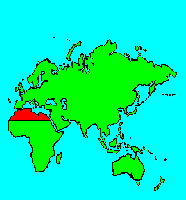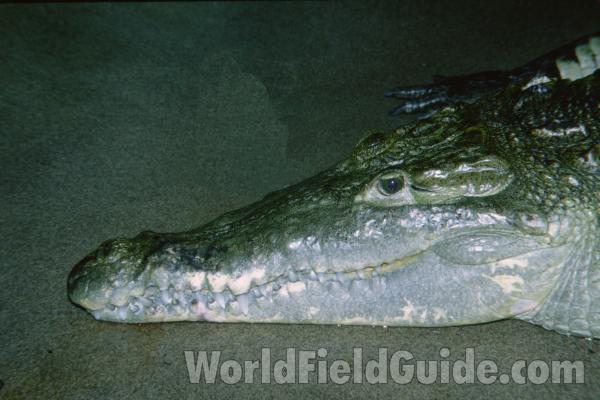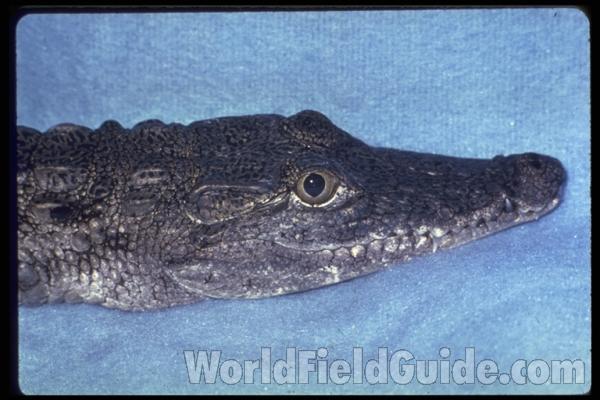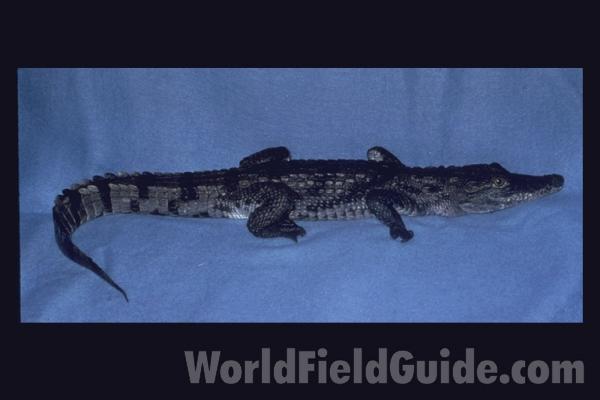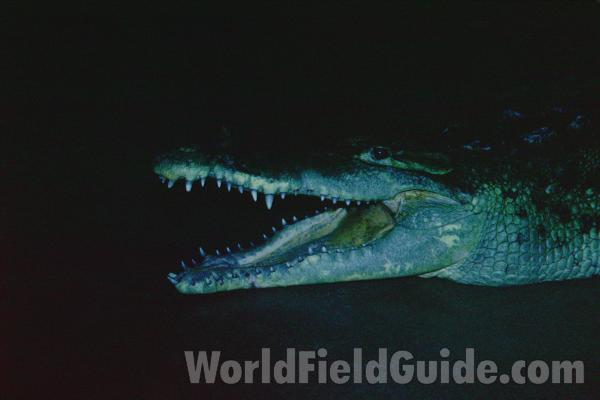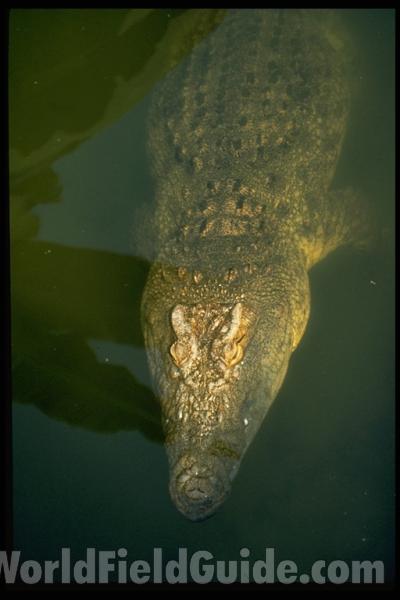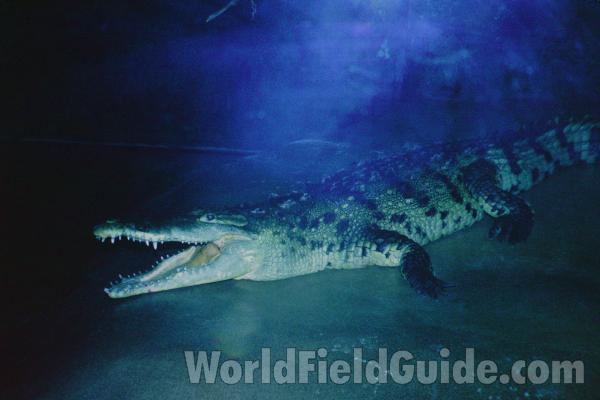SPECIES INFO
Nile Crocodile (Crocodylus niloticus) is found in the entire Nile River Valley. This species is also very widespread in Africa occurring almost to the Cape and as far east as the Atlantic Ocean. Originally, this species was found in Palestine but recently it has been eliminated from the Near East and the lower Nile River. This is a very dangerous species that can grow up to 18 feet or more. Nile Crocodiles will eat rather large mammals such as wildebeest and zebra.Crocodiles (Crocodylidae) are a group that is found throughout the world. Some of these reptiles can reach gigantic sizes. Some giants can reach 23 feet in length. The species are:
Crocodylus intermedius - Orinoco River Basin
Crocodylus acutus - Carribean and Central America
Crodocylus rhombifer - Cuba only
Crocodylus moreletii - Eastern Central America
Crocodylus niloticus - Most of non desert Africa
Crocodylus cataphractes - Mostly western and Central Africa
Crocodylus palustris - India
Crocodylus novaeguineae - New Guinea
Crocodylus mindorensis - Local in Philippines
Crocodylus siamensis - Thailand to Borneo
Crocodylus porosus - India to Australia (Salt and fresh)
Crocodylus johnsoni - Northern Australia
Crocodylus tetraspis - Western tropical Africa
Alligator and Crocodile group (Order Loricata) is comprised of a small number of species of very large reptiles. They have very large mouths with razor-like teeth. Another characteristic is their very large tail that is used in swimming and as a tool to catch their prey. They all can raise themselves up on their legs and run very quickly. This group evolved in the time of the dinosaurs, but has some modern developments like a four chambered heart.
(Some taxonomists place all of the living members of this order into a single family, and then divide that family into three subfamilies. Here all of the living species have been placed into three families.) There are about 22 species in this group.
Reptiles (Class Reptilia) are an ancient group of scaled chordates. These scales may be permanently joined, as in the turtles, or flexible, as in the snakes. Reptiles are land-based. Their eggs are laid on land and the young are air breathing.
In the Great Big Book of Snakes and Reptiles published in 2014, they noted that there are more than 7,000 species of reptiles alive today.
Backboned Animals (Phylum Chordata) are the most advanced group of animals on earth. These animals are characterized by having a spinal cord or backbone. Most members have a clearly defined brain that controls the organism through a spinal cord. Fish, amphibians, reptiles, birds, and mammals are in this phylum.
Currently, some taxonomists believe that the fish should be divided into two groups (sharks and regular fishes) and that there are some other primitive groups in the phylum such as hagfish or lampreys.
Animal Kingdom contains numerous organisms that feed on other animals or plants. Included in the animal kingdom are the lower marine invertebrates such as sponges and corals, the jointed legged animals such as insects and spiders, and the backboned animals such as fish, amphibians, reptiles, birds, and mammals.
